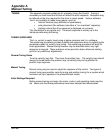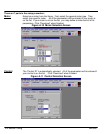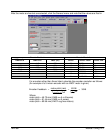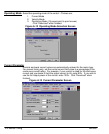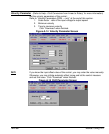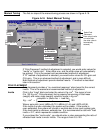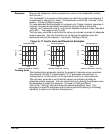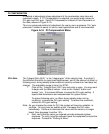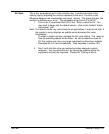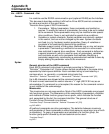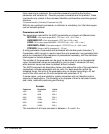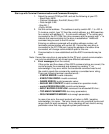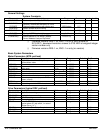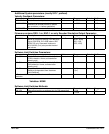
A-8 Manual Tuning MN1851
PI COMPENSATION
PI method of adjustment allows adjustment of the acceleration ramp time and
overshoot values. If “PI” Compensation is selected, you would enter values for
GV–gain and GVI–gain. Select PI Compensation instead of Pole Placement on
the menu shown in Figure A-16.
This is an advanced method of adjustment for use by servo engineers. The “pole
placement” method is easier to use for most applications and is recommended.
Figure A-18 PI Compensation Menu
GVI–Gain The “Integral Gain (GVI)” is the “integral gain” of the velocity loop. It controls 1)
the stiffness (the ability to reject load disturbances), and 2) the amount of offset, or
following error, during steady state conditions (velocity command or load does not
change). The adjustable range is from 0 to 32767.
1. Click on the “Integral Gain (GVI)” box and enter a value. You may want
to begin with the default values – click on the “default” button and
answer “yes. To increase stiffness, increase the GVI–gain setting. It
rejects load disturbance and compensates for system friction.
To reduce following error, or offset, during steady state running
conditions, increase the GVI–gain setting. To reduce the overshoot,
reduce the GVI–gain setting.
Note: As you increase the value for GVI, the system will become unstable, i.e.
oscillate. You may hear an audible noise. Decrease the GVI value
immediately. Continue to decrease the value until the noise is no longer
heard, then decrease it another 10%.
2. Next, verify that the value you entered provides adequate system
response. To verify, have the software move the equipment and plot the
response. Proceed to “Plotting of Move”.




